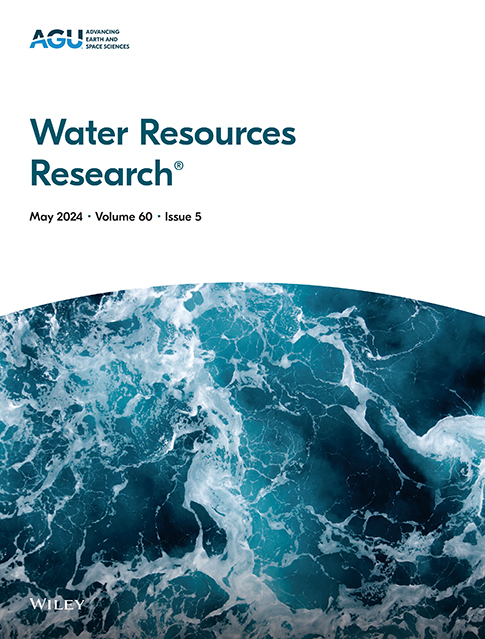Assessing Impacts of Hydropower Development on Downstream Inundation Using a Hybrid Modeling Framework Integrating Satellite Data-Driven and Process-Based Models
IF 4.6
1区 地球科学
Q2 ENVIRONMENTAL SCIENCES
引用次数: 0
Abstract
Despite its energy benefits, hydropower dam development often causes ecological damages and social disruption, including downstream livelihood impacts, and biodiversity loss. Current methods for analyzing changes in downstream inundation extent due to dam operation typically rely on historical ground or satellite observations, or on coupled hydrological-hydrodynamic modeling. However, while the former fails to isolate hydropower impacts from climate variations, the latter suffers from extensive input data requirements and high computational burden. This study proposes a novel hybrid framework integrating satellite data-driven Forecasting Inundation Extents using REOF (Rotated Empirical Orthogonal Function) analysis (FIER), and the process-based Hydrological Predictions for the Environment (HYPE) model incorporating the Integrated Reservoir Operation Scheme (IROS). The framework enables the isolated assessment of long-term hydropower impacts on downstream inundation dynamics with computational efficiency and reduced ground data requirements, making it suitable for poorly gauged regions. Applying FIER-HYPE-IROS to the Lower Mekong River basin (LMB), a region significantly affected by dam proliferation impacting fisheries and agriculture, we found that dam operations decreased decadal-average wet season water levels by up to 5% and increased dry season levels by up to 11%. Wet season inundation occurrence decreased by 11 days and the inundated area by 6%, while dry season inundation occurrence extended by 6 days and the surface water area increased by 40%. Although the current framework does not explicitly assess the downstream hydrological modifications, it offers a cost-effective alternative for evaluating upstream alterations on inundation dynamics, such as dam operations, particularly in poorly gauged regions.基于卫星数据驱动和过程驱动模型的混合建模框架评估水电开发对下游淹没的影响
尽管水电大坝开发具有能源效益,但它往往会造成生态破坏和社会混乱,包括对下游生计的影响和生物多样性的丧失。目前分析大坝运行导致下游淹没范围变化的方法通常依赖于历史地面或卫星观测数据,或水文-水动力耦合模型。然而,前者无法将水电影响与气候变异隔离开来,后者则需要大量输入数据且计算负担沉重。本研究提出了一种新型混合框架,将卫星数据驱动的利用旋转经验正交函数(REOF)分析的洪水淹没范围预测(FIER)和基于过程的环境水文预测(HYPE)模型与水库综合运行计划(IROS)相结合。该框架可单独评估长期水电对下游淹没动态的影响,计算效率高,对地面数据的要求低,适用于测量条件较差的地区。我们将 FIER-HYPE-IROS 应用于湄公河下游流域(LMB),发现大坝运行导致十年平均雨季水位下降达 5%,旱季水位上升达 11%。雨季淹没时间减少了 11 天,淹没面积减少了 6%,而旱季淹没时间延长了 6 天,地表水面积增加了 40%。尽管目前的框架没有明确评估下游水文变化,但它为评估上游对淹没动态的改变(如大坝运行)提供了一种经济有效的替代方法,尤其是在测量条件较差的地区。
本文章由计算机程序翻译,如有差异,请以英文原文为准。
求助全文
约1分钟内获得全文
求助全文
来源期刊

Water Resources Research
环境科学-湖沼学
CiteScore
8.80
自引率
13.00%
发文量
599
审稿时长
3.5 months
期刊介绍:
Water Resources Research (WRR) is an interdisciplinary journal that focuses on hydrology and water resources. It publishes original research in the natural and social sciences of water. It emphasizes the role of water in the Earth system, including physical, chemical, biological, and ecological processes in water resources research and management, including social, policy, and public health implications. It encompasses observational, experimental, theoretical, analytical, numerical, and data-driven approaches that advance the science of water and its management. Submissions are evaluated for their novelty, accuracy, significance, and broader implications of the findings.
 求助内容:
求助内容: 应助结果提醒方式:
应助结果提醒方式:


